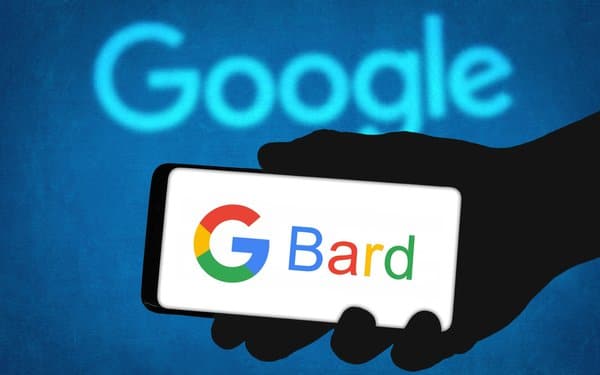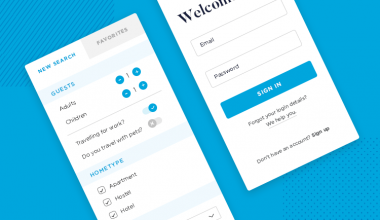Google Bard is a new chatbot tool inspired by ChatGPT that was released in the wake of all the buzz surrounding generative AI. Bard is intended to simulate human conversations and employs a combination of natural language processing and machine learning to provide realistic and helpful responses to questions you may pose.
Yea, a lot of that sounds like what ChatGPT does, but there are a ton of differences, especially with their mode of operation. And if you want to learn more about these differences, we’ve already covered that in our Google Bard vs ChatGPT article. But for this article, we will focus on the basics ranging from, What Bard is to how it works and how you can access it.
Let’s get started without further ado…
What Exactly Is Google Bard?
Bard is a beta Google chatbot powered by the LaMDA large language model.
It is a generative AI that accepts prompts and performs text-based tasks such as answering questions, summarizing information, and creating various types of content.
Bard also helps with topic exploration by summarizing information on the internet and providing links to websites with more details.
Why Did Google Unveil Bard?
After the wildly successful launch of OpenAI’s ChatGPT, which created the perception that Google was falling behind technologically, Google released Bard.
ChatGPT was viewed as a game-changing technology that had the potential to upend the search industry and shift the balance of power away from Google search and the lucrative search advertising business.
The New York Times they were reported on December 21, 2022, three weeks after the launch of ChatGPT, that Google had declared a “code red” to quickly define its response to the threat posed to its business model.
Google announced the launch of Bard on February 6, 2023, 47 days after the code red strategy change.
When Did Google Bard Become Available?
Sundar Pichai, CEO of Google and Alphabet, announced Bard on February 6 in a statement. Even though Bard was a brand-new concept at the time of its unveiling, the AI chat service is powered by Google’s Language Model for Dialogue Applications (LaMDA), which was introduced two years ago.
What Does the Name Google Bard Mean?
Bard gets its name from the word “poet” — as in William Shakespeare, the Bard of Avalon — as a reference to its linguistic abilities.
Because the name has geeky roots, it fits in perfectly with Google’s naming conventions. Bards are playable characters in Dungeons and Dragons. They inspired the old Apple II game The Bard’s Tale, which spawned a series of games, including a remastered 2018 edition of the original.
How does Bard Work?
Google wants Bard to supplement the Knowledge Graph Cards that appear in Search when you ask a simple question. While a Knowledge Graph Card can define a word or an overview of a person or place, Bard’s responses are intended to address NORA questions, as Google refers to searches with No One Right Answer.
Bard first employs LaMDA language models to comprehend your query and its context to accomplish this. LaMDA understands nuance and colloquialisms that search engines struggle with because it uses datasets that contain dialogue. Following that, Bard gathers information from the web to form an answer, which is then transformed into the type of conversational response you’d expect from a natural person (again, thanks to LaMDA). Like all AI chatbots, Bard’s goal is to provide high-quality responses.
Google wants you to use this tool to understand topics better and make decisions. During a demonstration in Paris, the company asked the AI chatbot to assist in deciding which car to purchase, then followed up with questions about the benefits of electric vehicles. Such prowess could eliminate the need to click on search results, but Google is taking precautions to preserve its relationships with websites and content creators.
Read Also: WHY DOES CHATGPT GIVE NETWORK ERRORS? Simple, Easy Fixes!!!
Bard is currently a standalone utility rather than a feature of Google Search. You can initiate a conversation with the AI, and what you say during a single session will be remembered, allowing you to use the context of previous questions to get more straight answers from Bard. You can even ask the chatbot for clarification if its information is unclear, and it will correct and apologize.
While Bard, ChatGPT-4, and other AI chatbots may provide quick responses, they may need to be corrected. These platforms offer answers influenced by biases in training datasets, conflicting or outdated information, or — in the case of CNET’s Wordsmith — artificial intelligence-generated facts.
Google has a lot of experience distinguishing fact from fiction and determining when to surface safe opinions — that is, opinions and theories that are mostly accepted as true — as well as surfacing the most accurate information available at the time. For example, Google’s Featured Snippets answer queries by collecting data from multiple online sources, determining a midpoint using machine learning models to quantify sentiment and other variables, filtering out answers outside the midpoint, and presenting a response that precedes its search responses.
Who Is Eligible to Use Google Bard?
Users who want to try out Bard must meet certain requirements by late April 2023. They must be at least 18 and have a personal Google account. Bard is currently only available in the United States and the United Kingdom but plans to expand its reach to other countries are in the works.
So far, Google has not mentioned any potential fees for using Bard. Given the company’s track record of providing free services (in exchange for personal data and excluding its cloud business and physical products), the Bard may be integrated into Google’s existing services and remain accessible for users.
When Am I Allowed to Use Bard?
Because Google Bard is still in its early stages, it is only available to a limited number of users as an experimental test version. If you want to give it a shot, you can sign up for early access on Google’s website — keep in mind that there is a waitlist.
During testing, Bard uses a lightweight model version of LaMDA, allowing Google to make the tool’s prerelease version available to more users. The company will use this testing phase to fine-tune Bard’s accuracy, quality, and speed.
Bard is currently available as a standalone utility but will eventually be integrated into Google Search.
There are some quirks and limitations to be aware of for the time being, so once you receive your invite to use the new tool, take some time to learn how to use Google Bard to find the information you’re looking for.
Once Bard has completed its testing phases, it should be integrated into Google Search. At that point, using the feature should be as simple as typing any query into the search bar — you’ll notice a difference when Google provides you with a comprehensive answer in plain English rather than a card and a list of links.
Search Engines vs Google Bard
Instead of simply providing links to answers, as a traditional search engine does, Bard aims to assist users in more profoundly exploring and uncovering knowledge.
The search engine giant emphasized that many people rely on Google for quick, accurate answers. For example, to learn objective facts such as the number of keys on a standard piano.
The company does, however, observe a growing trend of users seeking more in-depth insights and understanding. For example, people could ask, “Which instrument is easier to learn, piano or guitar, and how much practice does each require?”
Exploring topics of this nature frequently necessitates significant effort to determine the crucial information. Users often seek a diverse range of opinions and perspectives. According to Google, Bard will make a substantial difference in this area.
Bard Is Not the Only AI Initiative by Google
Google has invested significant resources, totaling hundreds of millions of dollars, in Anthropic, an AI startup similar to Microsoft-backed OpenAI.
Google has pursued other aspects of its AI strategy besides Anthropic and Bard. The company also revealed that AI tools are being integrated into Google Maps during the February AI event where Bard debuted.
Google has also announced significant generative AI enhancements for Docs and Gmail, similar to features recently introduced in Microsoft’s 365 Copilot. It has also unveiled a translation AI capable of handling 1,000 languages to supplement its existing MusicLM AI.
Furthermore, there have been reports that Google is working on Magi, an advanced AI search engine that could eventually replace Google Search. Unlike Search, Magi is expected to provide a more personalized and conversational experience. It may, however, stay within Search’s ad-supported model. More information about Project Magi could be revealed at Google I/O 2023.
What Can Google Bard Be Used For?
We are still determining what Bard is capable of right now. However, according to Bard, the chatbot can generate text, translate languages, write various creative content, and answer your questions “in an informative way.”
If you’re not satisfied with the answers, click “Google it” to go to Google Search for more information. This feature was recently improved in Bard’s first “Experiment updates,” so you now have more search options based on your prompt if you want to dig deeper.
According to Bard, it can generate poems, scripts, musical pieces, emails, letters, and more. Thanks to a recent update, it can now generate code in over 20 different coding languages, including C++, Go, Java, Javascript, Python, and Typescript.
We recently put it to the test in various ways, from asking controversial sci-fi questions to pitting it against the new Bing with ChatGPT to determine which phone to buy. Both provided some insight into Bard’s abilities — and shortcomings — so be sure to read them both.
Furthermore, there is mounting evidence that Google has big plans for Bard’s future. Google has hinted in recent weeks that Bard will begin invading your text messages and screening your phone calls on Pixel phones. They’ve also stated that Bard will undoubtedly be integrated into Google Search one day. So, while what it can do now is limited, what it can do in the future could be limitless.
How to Access Google Bard
Visit the official Google Bard website at https://bard.google.com/ to gain access to the experimental version of Google Bard. After clicking the link, click the blue “Join waitlist” button to join the waitlist. You must sign in with a Google account.
When you join the waitlist, you will receive an email with the subject “You’ve been added to the waitlist” from bard-noreply@google.com. When it’s your turn to try Bard, you’ll get another email with the subject “It’s your turn to try Bard.”
Google Workspace accounts are not permitted to sign up for Bard. You’ll get a “This Google Account isn’t supported” message if you try. Google Bard also does not support user accounts belonging to people under the age of 18.
To participate in the experimental version, you must sign in with a personal Google account. If you don’t already have one, you can create one for free. To switch Google accounts, go to the top-right corner of the Google Bard page and click the profile button.
Is Google Bard Completely Free?
For the time being, Bard will be free. Given that Google does not charge for Google Search, it would be surprising for Google to charge for the consumer-facing version (i.e., a version intended for everyday users) of Bard, but given that ChatGPT Plus exists as a subscription service from OpenAI-backed Microsoft, anything is possible.
Related Articles
- WRITERS GRANTS: Top 50 For Poets, Fiction & Nonfiction Writers In 2023 (UPDATED!)
- WHY IS CHATGPT AT CAPACITY? How to Fix it Now
- How to Use Google Bard Effectively!!!
- Chat GPT: Will ChatGPT Replace Google? The Model Analysis
- ChatGPT: What the Future Holds & All You Should Know
- Bard vs ChatGPT: Alternatives, Differences, Which is Better?
- Aliexpress Logo: How a Mega Platform Was Created!!!






